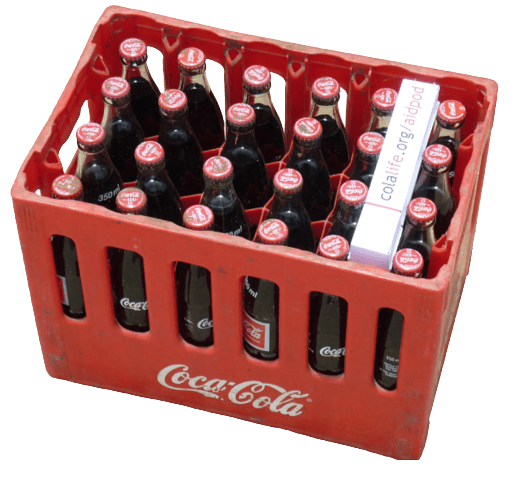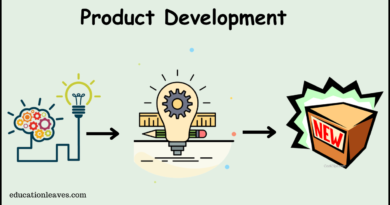Product Packaging: Requirements, Functions, Types, Packaging Methods.
We have discussed the four very important P’s of a marketing mix, namely Product, Price, Place and Promotion. But do you know often people consider Packaging as another P that is equally important? Yes, product packaging is a very important element in marketing. Let’s discuss why.
Product Packaging is the art and science of preparing goods or product for transport and sale. Packaging is the means of ensuring safe delivery of the product to the ultimate customer in sound condition at a minimum overall cost.
A package most clearly bridges the traditional realms of production and marketing. It is an important activity of a sales promotion department because an attractive package catches the attention of the customer and speaks itself to them.
In simple words, packaging refers to designing and developing the wrapping material or container around a good or product that helps to
- Identify the product in the market,
- Protect the products against damage in transit,
- Store the product in good condition,
- Promote the sale of the product,
- Use the product properly.
What you are going to learn?
Requirements of packaging
The package of a product must
- speak about the product.
- Catch the attention of customers.
- Look clean and sanitary.
- Prevent spoilage of the product.
- Be of convenient size and shape to carry.
Functions Of Packaging
Let us take a look at some uses and functions that product packaging serves.
Protects the product:
Packaging physically protects the goods and their quality, features, utility, etc. from being damaged during transportation, and storage, or protects from environmental factors like moisture, dust, temperature changes etc.
Convenience
Proper packaging aids product handling and makes it more convenient to transport, ship, and even use the product.
Makes product stand out
Product Packaging makes it easier for the customer to identify and differentiate it from other products. Attractive packages help the brand stand out in the market and attract customers towards it.
Forms a part of product marketing strategy
An attractive package possesses considerable sales appeal and thus promotes sales of the product. Packaging can make a simple product look attractive or a unique product looks ordinary. Because it is only the package that attracts public attention, describes the product’s features, gives the customer confidence and makes a favourable overall impression.
Information Transmission
Packaging and labelling are essential tools to get customers aware of product features, directions for use, storage instructions, ingredients, warnings, helpline information, etc..
Security
To ensure that there is no tampering with the original product packaging is necessary. The package of a product will protect the product from any foreign elements or alterations.
Download the Product Packaging PDF
Types Of Packaging
We can categorise product packaging into three types depending on its usage and purpose. These types are:
Primary Packaging
Primary packaging is in direct contact with the product and is intended for the customer to identify, gain product knowledge, and aid product consumption. It is the initial layer, like the plastic pouch, cardboard box, etc. containing the finished product, that protects and preserves the finished product from contamination and tampering.

Examples of primary packaging are:
- Plastic containers for fruits
- Tin cans for soft drinks
- Laminated tubes for beauty products, etc..
Secondary Packaging
Secondary packaging forms the second packaging layer that the customers don’t usually see. It combined smaller product units into a single pack and helps in inventory management before showcasing the product to the customer.

Examples are:
- Plastic ring that holds cold drink cans together, and
- Cardboard box containing multiple individual boxes of cereal, etc.
Tertiary Packaging
Tertiary packaging is used to group a large quantity of a particular product to transport. The main aim of this packaging is to make it easier to transport heavy loads or large quantities of a product easily and securely.

Examples:
Wooden pallets are used in freight shipping.
Packaging Methods
A large variety of products, taking from food and drugs to automotive parts and hardware, all need suitable packaging. So, the method of packaging depends upon the nature of the product, whether it is liquid, solid, powder, gas, corrosive, inflammable, volatile, explosive, etc.
The properties of the product that help design the packaging system are its size, shape, weight, value, transport hazard, and fragility.
The mechanical properties of the packaging material and the compatibility of the goods and the package also deserve consideration. We can package products in –
- Corrugated shipping containers.
- Metal cans.
- Paper foil cans.
- Glass bottles.
- Plastic bottles.
- Plastic film pouches and bags.
- Paper cartons.
- Paper wraps.
- Card-board cartons.
- Wooden crates.
- Cushioned containers.
- Fibre-board containers.
The small products can be packaged in cardboard cartons. Large products such as machine tools or refrigerators can be put into wooden crates or packaging cases and firmly bolted to the side or back or bottom of the case so that there is clearance all around between the outside of the article and the inside of the case.
Product packaging methods have improved a lot in recent years, for example:
- A refrigerator can now be packed in a large fibre-board container on a completely automatic machine.
- Delicate precision instruments that formerly required cushioned containers are now suspended in plastic envelopes in rigid boxes.
- Furniture, which would be carefully enclosed in costlier wooden crates is now being boxed in fibreboard cartons.
- packaging of food in plastic and other paper containers has contributed to its protected to its protection from getting spoiled.
- Lumber can be shipped in palletised loads instead of being piled in a truck.
Advantages of Product Packaging
The following are the benefits of the Product packaging:
- Protection: The packaging provides excellent protection to keep the product safe. The product will not damage due to mishandling and misuse of package experiences during shipment.
- Eco-Friendly: The packaging can be made of environmental-friendly material that reduces the carbon footprint. People contribute to saving the Earth by preferring for Nature-Friendly Boxes.
- Customization: Custom packaging allows people absolute freedom in the designing and printing processes. Retailers can have anything they require on the packaging in order to acquire prominence in the market.
Disadvantages of Product Packaging
Let’s discuss some disadvantages of packaging:
- Cost: The packaging is generally inexpensive, but embroidering them with personalization and coating could burden the wallet. It requires more money for extra design and printing.
- Plastic: A few packaging solutions use plastic or exhaust natural resources for preparation. It adds to the waste that can turn hazardous, especially if it is plastic.
- Cardboard: Mainly used material, cardboard, is not so great against moisture or to carry heavy items. Eventually, everything leads to spending extra money when it will be increased with additional material.
- Manipulating customer: Packaging can trick the customer into getting a wrong perception of the product.




